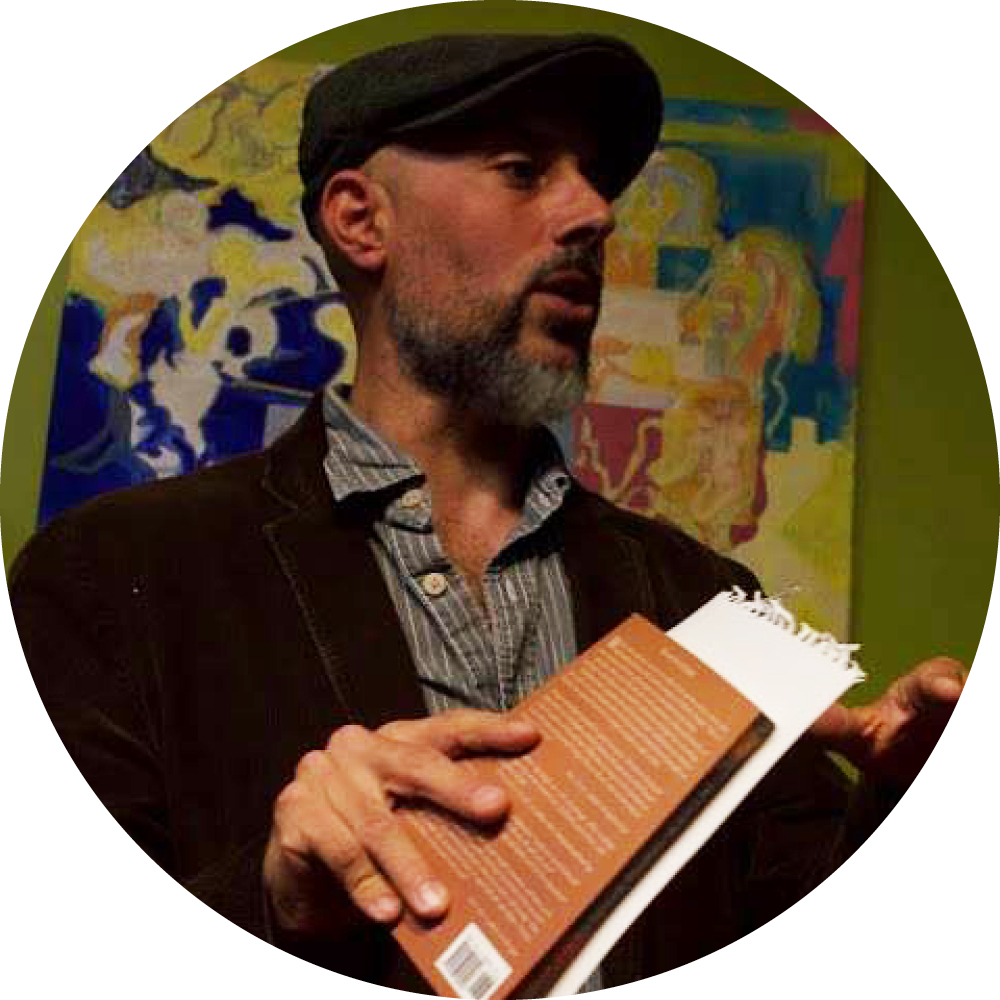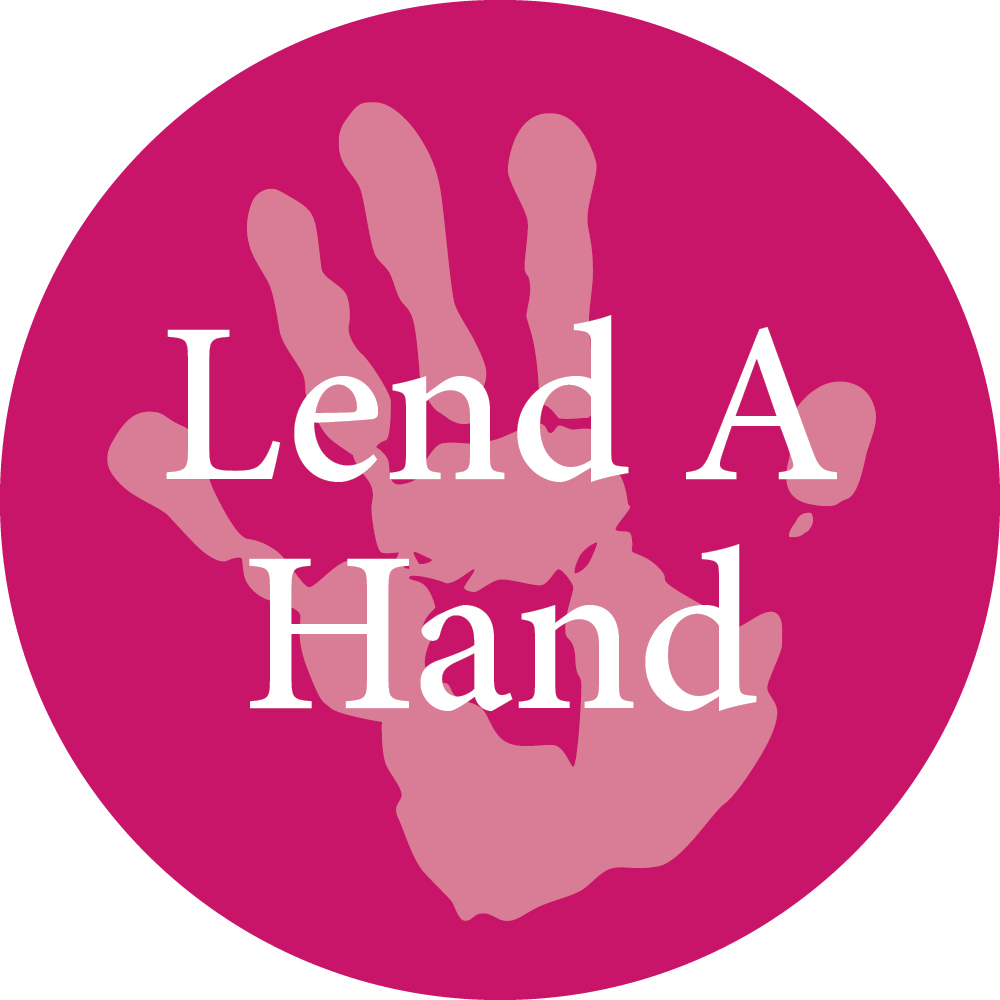Open Letter To Business
Owners & Leaders
By Todd Hoskins
“Power is concerned with what has already happened; strength with what has yet to happen.”
– James Carse
Dear Business Leaders & Owners,
I know you are feeling uneasy. Despite reports of widespread record profits, and the Dow being at an all-time high, you sense a big shift is underway that is shaking the foundations of capitalism. We are facing political upheaval, disengaged workers, constant disruption, and an accelerating pace of change. Volatility, uncertainty, complexity, and ambiguity are now common enough refrains that we’ve borrowed the military acronym “VUCA” to describe the nature of these times. Deep down inside, you know that proclamations and predictions of “business as usual” are statements of denial with fingers crossed behind one’s back.
We hear the blame for this disturbance projected onto leadership, policy, technology, globalization, greed, and even Millennials. We live in an age of complexity. Any attempt to prescribe causality should be resisted. That being said, I implore you to consider two hypotheses.
First, we are within a fundamental shift that is much more than a business cycle. Organizations can either participate in the shift or they can watch it pass them by. As Dawn Vance from Nike said, we can either “hit the wall,” optimize and then “hit the wall,” or redesign for resilience.
Second, the only way that the current state of free market capitalism will avoid being toppled is if business leaders take on a deeper sense of responsibility for the world we are creating. As strategy guru Michael Porter writes, “The old models of corporate strategy and capitalism are dead. We are witnessing a paradigm shift from hurting to helping.”
As a business owner, I have been grappling with these questions of, “What exactly is happening?” “How can I adapt?” And, “What is my responsibility?” for nearly a decade. I have no definitive answers, but I invite you to join me as I explore some options for adapting to change and stepping up as societal leaders.
The Shift to Networks
What if the big shift is not a business cycle, nor anyone’s fault, but an awkward transitional phase of our evolution? Political scientist David Ronfeldt has studied the shifts from Tribes, to Institutions, to Markets across cultures, and identifies the Network as the emerging form. Network science may have been born in the 18th Century, but it has only been widespread as a field of study for twenty years. The rise of networks is both a lens on what is already happening, and a natural outgrowth of a more connected world.
Individuals as actors in these networks are just starting to grasp their own power. Today a single hacker can cripple an economy, a single entrepreneur can upend an industry, and a single terrorist can provoke fear in millions of people. But they are never alone, always supported by or learning from a network.
Individuals banding together have elected a US President with little support from an institutionalized political party. They have created global movements in a matter of minutes. Flash mobs and crowdfunding are just early examples of people quickly gathering and supporting the changes they want to see.
Four-star US Army General Stanley McChrystal recognized this tidal wave during his leadership in Afghanistan fighting the highly-networked Taliban. In order to fight a network, the military needed to become a network. Institutions are adept at follow marching orders, and modern warfare requires adaptation, not marching. McChrystal helped lead an effort to transform the US Army, and now he engages large organizations who are trying to adapt as well.
A power shift is taking place from institutions to networks, from petrified power to spontaneous power, from pyramid structures to self-organizing people. As Ronfeldt says,
“This revolution makes life difficult for traditional institutions. It erodes hierarchies, diffuses power, ignores boundaries, and generally compels closed systems to open up.”
What was once hierarchical and controlled has broken open. Things are forever changed. Tribes, institutions, and markets are not going to vanish; they are in the process of being altered by the emergence of networks.
Trust and the Confidence Game
Some of you might say, “Let the market sort this out. The market will adjust. Trust the market.” But what exactly are we trusting? Free markets are only free when structures are built and maintained to keep the market free. The market is an abstraction formed by political activities, not a heavenly superstore with divinely constructed walls. As Karl Polanyi wrote, “Laissez-faire was planned.”
So if one chooses to trust the market, one chooses to trust the people in power. Since business is the nexus of power in much of the western world, a businessperson (or politician) who says “Trust the market” is essentially saying, “Trust us.” The market is buttressed by human hands, our hands.
So what have we done with this responsibility? We have let the perimeter crumble. We have locked gates and required a secret password. The market has become an insiders game in which the rules get changed based on who is winning, creating a game within a game.
Just like the commentary from the US Presidential debates in 2016 focused on who was most “convincing,” not who was telling the truth, executives are praised based on their ability to “maintain confidence” as much as performing with prudence. The media and analysts become players of the game as well.
We have relentlessly insisted that the market is strong, our earnings will improve, the product pipeline is exemplary, and our sales funnels are expanding. Owners, leaders, and stockholders collude in believing that quantitative growth is inevitable even when planetary resources deem it impossible. Buybacks and growth by acquisition have become key parts of the game, honoring executives and investors above employees and customers. Economist Tom Osenton writes,
“We have squeezed the lemon dry. We have pulverized the lemon. We have nuked the lemon. And now we are trying to find ways to use creative accounting schemes to create the illusion that there is still juice left in the lemon.”
Please understand; there are a lot of juicy lemons out there. The world is ripe with great ideas and great people to harvest them. But there are too few winners. There is too much focus on winning.
Why are we obsessed with winning? Well, it feels good. It defines success in our era. It addresses personal insecurities and organizational schizophrenia. And perhaps most importantly in the business world, it fills the vacuum of a business without purpose. What is our strategy? To beat the competition.
In the words of James Carse,
“A finite game is played for the purpose of winning, an infinite game for the purpose of continuing the play.”
Competition, Meet Cooperation
The infinite game would allow for more people to participate. As Thomas Piketty recently demonstrated with pages of tables and graphs, capital inevitably flows into fewer and fewer pools within a free market. Wealth accumulates like dust bunnies in the corner. As Ronfeldt writes,
“Despite all its strengths and contributions to the advance of society, the market system has a key limitation of its own: It contributes to creating social inequities, and does not prove adept at addressing them.”
We keep believing in a simple formula of progress through efficiency, and efficiency through competition. The winners deserve to win, and the losers deserve to lose. Winning helps us all by “raising the bar.” Losers must improve or they will continue to lose. This brutal narrative fits with the ethos of rugged individualism in the US, and the myth of the entrepreneurial hero who alone “conquers” all odds. German philosopher and biologist Andreas Weber writes:
“Biological, technological, and social progress, so the argument goes, is brought forth by the sum of individual egos striving to out-compete each other. In perennial rivalry, fit species (powerful corporations) exploit niches (markets) and multiply their survival rate (profit margins), whereas weaker (less efficient) ones go extinct (bankrupt).”
This ‘nature red in tooth and claw’ perspective permeates our thinking in business and culture. As Weber also says, “It validates the notion of rivalry and predatory self-interest as inexorable facts of life.” The challenge-seeking parts of us crave the elixir of competition. It provides a challenge that is decipherable and measurable. While it is undoubtedly beneficial and innate, competition was elevated to an organizing principle, denigrating its stabilizing companion of cooperation.
Evolutionary biologists increasingly marvel at how much cooperation in nature Darwin could not see, blinded by the mechanistic, industrial philosophy of his time. Recently we are beginning to understand that trees don’t just compete for water and light. They actually share nutrients and information through their roots, connected by networks of fungi. We have assumed that competition was the survival narrative, while cooperation has been there the whole time, beneath the surface. Physicist Fritjof Capra writes,
“At the forefront of contemporary science, the universe is no longer seen as a machine composed of elementary building blocks. We have discovered that the material world, ultimately, is a network of inseparable patterns of relationships; that the planet as a whole is a living, self-regulating system… Evolution is no longer seen as a competitive struggle for existence, but rather a cooperative dance in which creativity and constant emergence of novelty are the driving forces. And with the new emphasis on complexity, networks, and patterns of organization, a new science of qualities is slowly emerging.”
Author Daniel Wahl applies these insights to business:
“Our ability to cooperate has shaped who we are in equal and possibly more profound ways than competitive behavior, hence we need to re-design economic systems to establish a healthy balance between the way competition and collaboration are incentivized in the system.”
Scientist Lynn Margulis sums it up, “Life did not take over the globe by combat, but by networking.” We have not caught up with this truth. What is the point in winning if our children or our neighbors lose? Is it really winning when the majority forfeits?
There are now 95 million working-age Americans not in the workforce. There are tens of millions workers who are unhappy. There has been a slow, steady transfer of power from workers to employers over the past thirty-five years. The American dream was fueled by the belief that everyone can win. Now too many have given up. Customers, partners, and workers are beginning to abandon their past hopes, but they will eventually unite and form networks that will leave us behind if we don’t do something.
So, what do we do?
Reconsider Ownership
Peter Block captured the timeless truth that “people will be accountable and committed to what they have a hand in creating.” This principle applies to both customers and employees. Advocacy increases when people are not just “consuming” or “working” but are directly participating in a worthwhile endeavor. In a connected world, business models that are participatory are more likely to succeed in the long term.
More and more, customers and partners are contributing to design, strategy, and marketing for organizations they care about. When granted ownership for making key decisions, the network becomes more invested. This is much more than just soliciting “buy in.” It requires creating space to be impacted by those you are impacting. We are just starting to understand how these social processes can work. The tools already exist to expand participation at scale rather than just through customer advisory councils, focus groups, and influencer programs.
Employees, too, become more engaged when they are more fully participating in the direction of the company. General Electric is in the midst of a big structural transition to empower its 333,000 employees to take the company into the future. Beth Comstock, the Vice Chair of GE, outlines a vision of distributed management and culture of openness in her book The Rise of the Emergent Organization.
Some companies have succeeded through granting full ownership to its workers. There are now nearly 7,000 organizations with employee stock ownership plans in the United States, with a total of 13.5 million participants and $1.1 trillion in assets. This number does not include the many companies that offer stock options, or companies that offer profit sharing. Within an ESOP workers receive the power of ownership through company stock. Studies demonstrate that ESOP’s have greater worker satisfaction, better performance, higher wages, and more job security than publicly traded companies. Two of the five largest ESOP’s in the US are supermarkets, low margin businesses with historically high turnover rates.
Author Douglas Rushkoff writes, “A genuinely distributed economy requires those on the ground to develop strategies for economic and social viability from the bottom up.” The cooperative model may be the best within capitalism for developing these strategies. More than 250 million people around the world work in or within the scope of cooperatives, associations of people united voluntarily to jointly own and democratically control their enterprise. Cooperatives have flourished in almost every sector from healthcare, to banking, to manufacturing.
For example, half of Germany’s renewable energy is citizen-owned. In May of 2016, renewables in Germany supplied nearly all of the domestic electricity demand. The flagship example of the cooperative model is the Mondragon Corporation in the Basque region of Spain, with over $16 Billion in revenue, spanning 257 separate cooperatives that include over 74,000 workers. Over more than sixty years, only a few Mondragon companies have failed and no jobs have been eliminated. If an organization of this size can effectively govern itself democratically, we can’t claim that expanding ownership is too complex.
The core of these practices and models involve creating “structures of belonging,” to borrow Block’s phrase. People deeply desire to be included, listened to, and valued for their contributions. They want to be invited into membership, feeling more useful and connected to each other and the outcomes they generate. Capitalism detached from a universal drive for belonging – severed from human connection – creates schisms and isolation. It doesn’t have to be this way. The option of sharing ownership, whether through company stock or decision-making, leads to stronger networks, more sustainability, and a more balanced economy.
Open the Doors and Windows of your Organization
If you imagine a company as a house, envision the typical departments occupying various rooms throughout the house. Perhaps human resources is in the foyer, operations in the basement, product development in the kitchen, and so forth. In this analogy, the traditional role of marketing has been to create a winsome awning and a fine porch to attract customers.
As we are now in the age of transparency, the customer is no longer willing to stand on the porch. There are people peeking in windows, walking the perimeter of the property, and resident workers pushing messages through bricks in the wall. There are eggs thrown at the porch via social media. Even for small businesses, there is quite a bit of commotion around our tiny homes.
This is stressful for companies that like their pristine porticos. As McChrystal writes, “Most organizations are more concerned with how best to control information than how best to share it.” There are more people now who want to know how a company treats its workers, how they treat the planet, and what they stand for. They expect an available chat window, phone line, or response on Twitter.
With communication networks, this information circulates quickly. A bad retail experience may have previously been shared with a few folks at the bar or salon, or in the church basement with a dozen people. Now, the network effect kicks into gear and a story can reach thousands within minutes.
You can try to maintain the organizational façade, or even install security cameras, but recognize that information wants to be free. Rather than having a surveillance approach, I encourage you to selectively open doors and windows. Invite people in to see the inner workings of your company.
The visitors may applaud, or they may gasp. Each gasp is an opportunity to learn, an invitation to respond with real questions, acknowledge flaws, and offer amends and aspirations. The public wants authenticity, not defensiveness, and tends to reward companies that reveal their own maturation process. This gives you the chance to utilize a positive network effect. As author Harold Jarche writes, “Trust emerges through openness and transparency.”
The online retailer Zappos openly publishes an annual culture book of employees’ statements and art about working at the company. It is unedited, and thus includes complaints as well as praise. It is an authentic representation of culture – more of a glass house than a contrived porch.
The technology company Buffer openly publishes how they calculate their pricing model and employee salaries. As a customer or prospect, you can see how the subscription fees you pay are allocated. Consulting company August posts their strategy documents in a public Google Drive for anyone to review. Billion dollar tire retailer Les Schwab has shared profits with employees since opening their first store opened in 1952. Now they have nearly 500 stores, crediting their growth in part to training each person, who starts by changing tires, on how to read financial statements and ledgers. Everyone in the shop has full access to the books.
Invite the public to meetings. Have open Q&A sessions with workers, prospective employees, customers, and citizen media representatives from the community. Share unfinished ideas and concerns with employees. Facilitate a strategy rather than deliver one. Capitalism needs more accountability. We need more open books, open data, and openness to dialogue. This is the path to restoring trust.
Adopt an Ecosystemic View
The “organization as house” metaphor is increasingly insufficient. The open exchange of ideas and resources now blurs the boundaries between organizations. The value chain has evolved into a value network. For any organization, the network is vast: an ecosystem of networks.
A very helpful metaphor is thinking of organizations as living systems – dynamic networks. The modern, industrial view is that an organization is like a machine, not a living system. With machines, you can repair the system with new parts (people), lubricants (policies), or software (processes), and the machine may work more effectively. With living systems, you need a whole new set of perspectives and skills because every participant in the system is dynamic, impacting every other participant, creating incredible amounts of complexity.
Networks do not just consist of nodes or objects: people, organizations, and data. The relationships between, the connections between these nodes, are the primary drivers of value. As Victor Hwang writes,
“An economy is not just indicated by the existence of things, like assets or wealth. It’s also about how those things flow in the system. And flow is driven by how interconnected people are, and how effectively the system enables connections to become valuable exchanges. Trust among strangers, connections between diverse parties, mutual collaborations, shared visions, new teams being formed – these qualities drive flow, they lower systemic transaction costs. That’s what we mean when we talk about ecosystems.”
In order to thrive in these ecosystems, we must create the best possible conditions to enable these connections. New hires and restructuring can help, but often don’t address the core dynamics of an organization. Relationships flourish when there is mutual understanding, a spark of energy, and a continual flow of quality interactions.
Understanding needs to be expansive, not just limited to boss and team. Get the engineers out into the field, the accountants talking with customers, and the executives at corner cafes in local communities where the business is active. Web browsing should be encouraged. Cross-departmental meetings should not just focus on specific projects, but on continual sharing and learning. The French manufacturer FAVI does not permit meetings to be scheduled at all unless there is representation invited from all teams. We are not talking rules or bureaucracy, nor are we talking about market research. This is about developing an enterprise nervous system.
Where researchers are looking to collect specific data, an approach that often feels extractive to the subject, this practice is about listening for impact and deeper understanding. In return, workers should feel empowered to share what they’re thinking about, learning, and developing. These feedback loops, both inside the company and out in the community, are how networks build capacity and trust.
There is a spark of energy in the process of understanding between people who are alike, and a different one between people who are different. This is one reason why diversity is so important. Diverse networks are resilient and creative networks. We need difference. We need interactions that don’t fully make sense until we develop empathy. John Hagel calls this “productive friction.” Beth Comstock refers to the importance of “tension.” My colleague, Marti Spiegelman, will talk about “dissonance.”
As leaders, we have the opportunity to hire accordingly. We also have the responsibility to create the conditions where deep diversity in thought, background, perspective, skin color, anatomy, beliefs, and worldviews that are not just tolerated but celebrated. This is more than a socially responsible practice. Ecosystems thrive with diversity.
With the understanding and the spark of energy, we then need the architectures for collaboration. This involves tools and habits, but also setting the tone and scope of interaction. Why are we sharing? The difference between cover-your-ass sharing and a generous exploration of thoughts-in-process is the difference between a static company and a dynamic company. Mandated sharing is just reporting, and may provide information but does not maintain the spark.
The tone becomes generous when there is trust and shared empathy, along with an openly-evolving purpose. Invitations to risk and experiment raise the level of excitement and engagement in this environment.
Collaboration need not be limited to the organization and its partners. Communities of practice exist for people in a field to share insights with one another. In the past decade, global solutions networks have taken off that create forums for NGO’s, companies, individuals, and government to collectively address poverty, human rights, sustainability, financial inclusion and youth unemployment, to name a few.
Collaboration is an opportunity to collectively exchange value that can provide benefits to all – better outcomes, happier employees, faster learning, and more sustainable organizations.
The Challenge
In his 2016 book, How Will Capitalism End?, economic sociologist Wolfgang Streeck predicts that this current cycles of wealth accumulation will continue and capitalism will consume itself. The size of the dust bunnies in the corner will clog all the filters. Social disintegration will accelerate as only the apex predators – the top of the food chain – will wield power.
I take a more positive view, believing that the power of networks, and business owners cooperating with them will lead to a new era of qualitative growth for communities everywhere. Take this challenge and responsibility seriously. We can save capitalism from itself and create a future in which everyone thrives.

Re-sources
Re-Imagining Education

Empowering educators to take a deeper look at the stories told in our schools and to re-imagine them in transformative and
nurturing learning spaces.
Learning Opportunities

Classes, workshops, and lectures that help to empower people to re-imagine who they are and their place in the world.
Get Involved

Help the Chicago Wisdom Project realize its mission to re-imagine education through holistic programming that transforms individual, community and world through creative expression.
